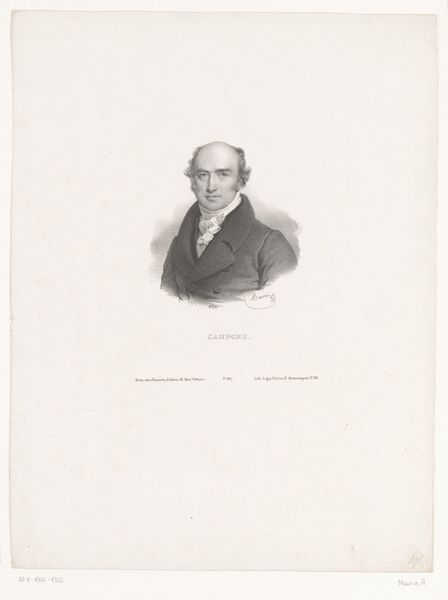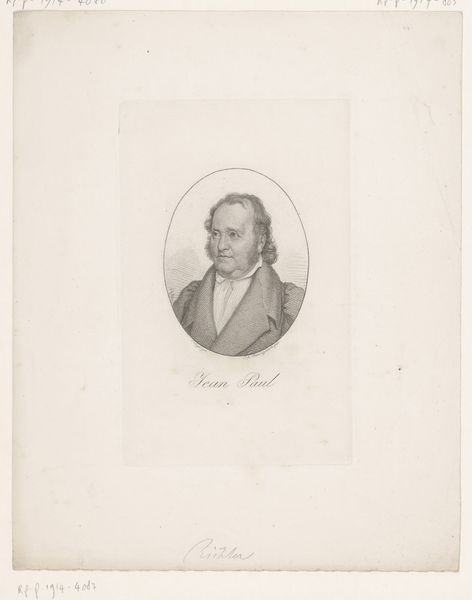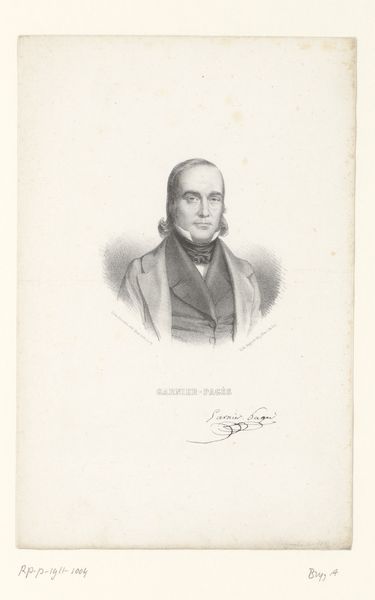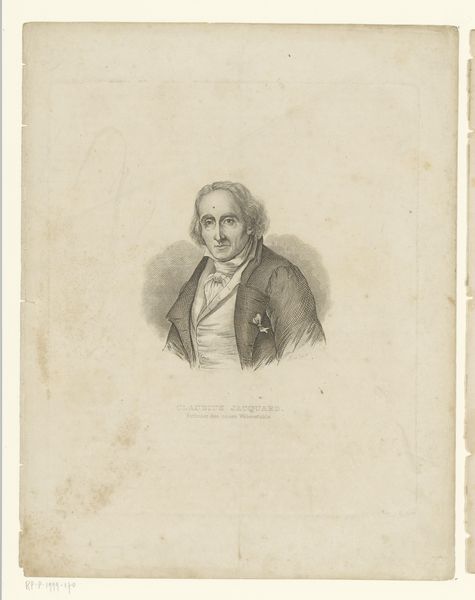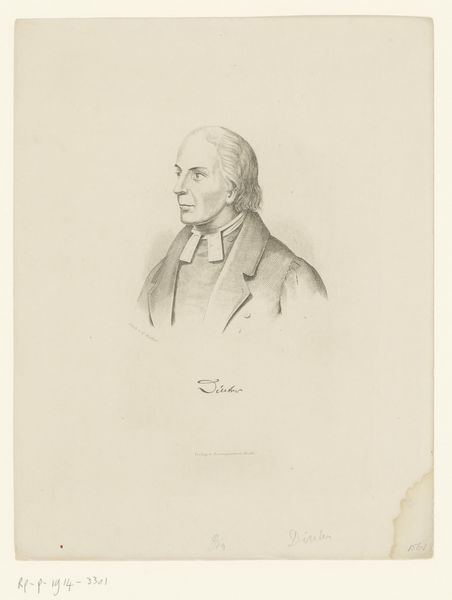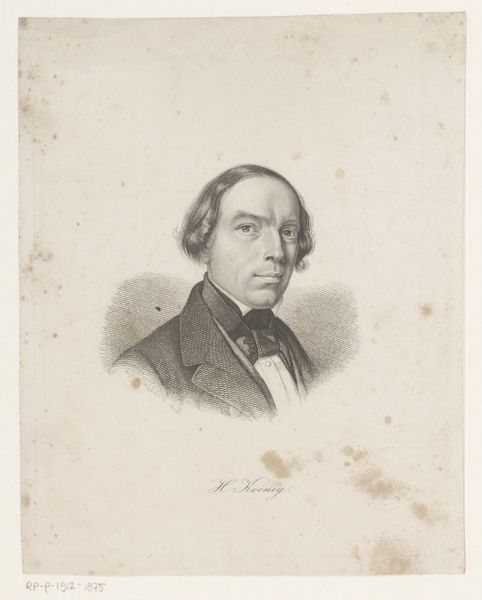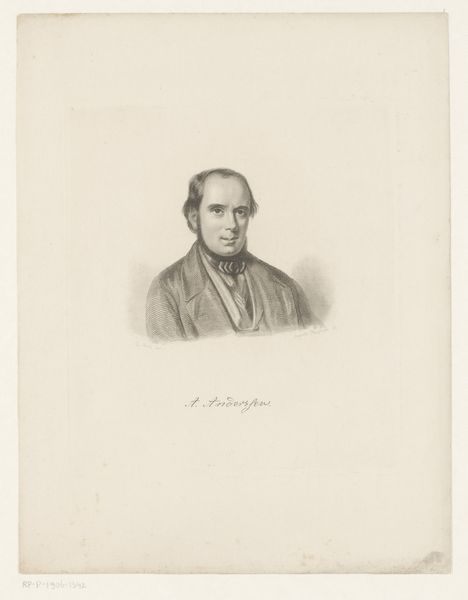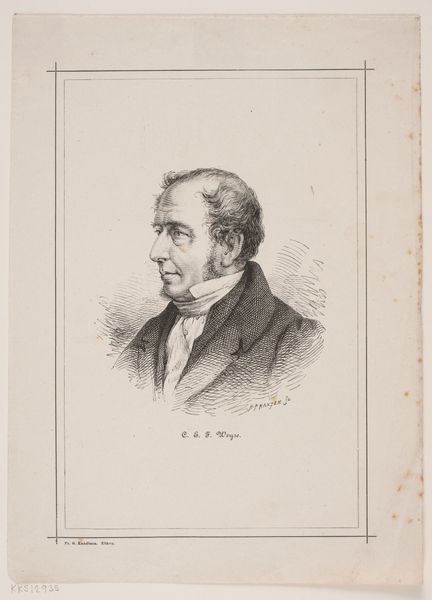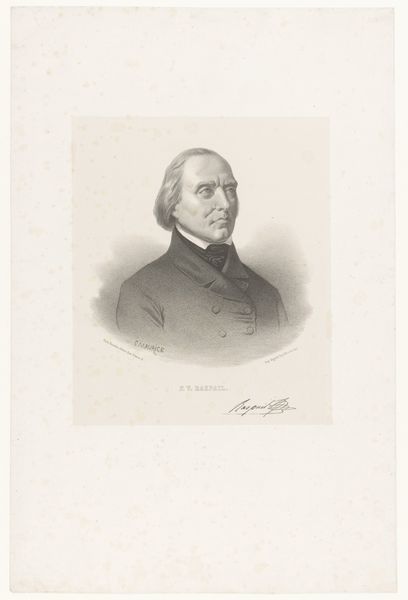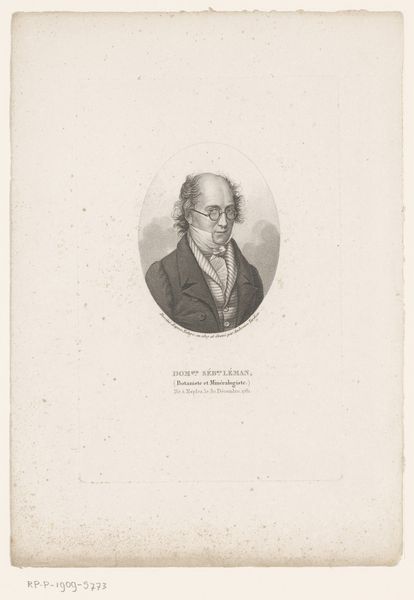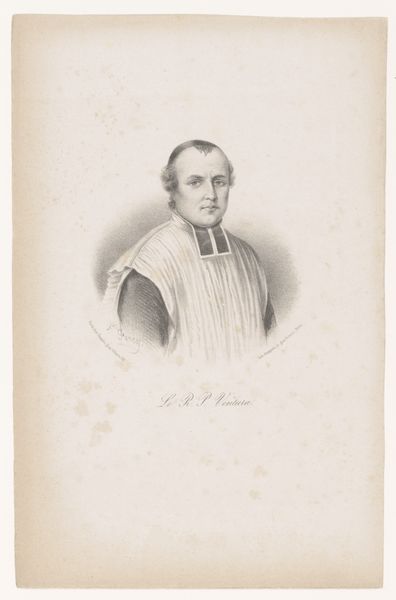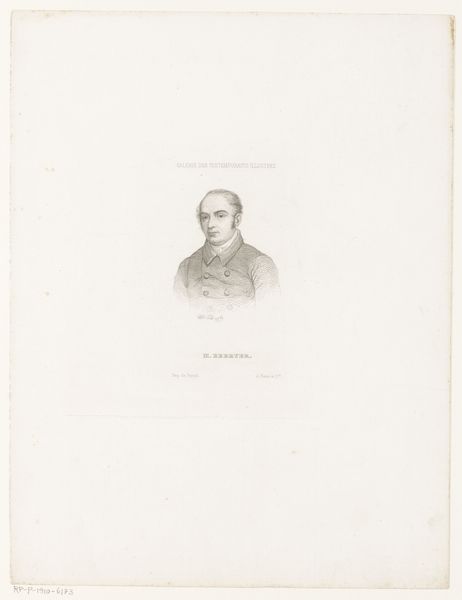
drawing, print, graphite
#
portrait
#
drawing
#
neoclacissism
# print
#
pencil drawing
#
graphite
#
portrait drawing
Dimensions: height 220 mm, width 155 mm
Copyright: Rijks Museum: Open Domain
Curator: Before us, we see N.M. Schild’s "Portret van Mathieu Orfila," likely rendered between 1837 and 1840, here at the Rijksmuseum. It’s a graphite pencil drawing and print. Editor: I'm struck by the overall severity and exacting detail. The figure projects a rather serious mood through its lines and composition. Curator: The very precise rendering is typical of Neoclassical portraiture, an approach favoured during this period, focusing on capturing not just likeness but also status and intellect. Note the layering of the pencil strokes that model the figure. It’s very academic. Editor: And yet, this image subtly transmits power and influence. Orfila's piercing gaze demands respect. We need to remember Orfila’s groundbreaking toxicology work and understand this is how physicians needed to portray themselves to gain acceptance for forensic medicine in court and society. Curator: Precisely. Semiotically, that medallion could stand in as a signifier of scientific advancement. He's dressed in what could only be professional clothing; perhaps ceremonial robes intended to indicate something akin to institutional position, but ultimately creating meaning by constructing professional dress and attitude in the sitter. Editor: The slight asymmetry of his features introduces an intriguing note of realism; perhaps even vulnerability. It prevents the portrait from being purely celebratory. This approach surely gained him public confidence, to look like just an ordinary man elevated by science. Curator: Indeed, these touches temper the rigidity of the Neoclassical style. But without a grasp of that code of visual rhetoric in portraiture, such gestures would be meaningless. The texture work here does so much to show the play of light. It has so much movement contained by its lines and frame! Editor: Considering his contributions to toxicology, this portrait is not just a picture but evidence. It reflects the importance placed on establishing and recognising scientific authority through portraiture at that time. I find the whole idea of his field evolving with this painting as it became accepted quite amazing. Curator: That history surely adds another interpretive layer. And yet, purely formally, its balanced structure provides stability that suits it very well. Editor: It has changed my perception, too. Initially, I thought this formal work had limited range; understanding his impact, I respect this piece far more.
Comments
No comments
Be the first to comment and join the conversation on the ultimate creative platform.
